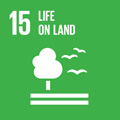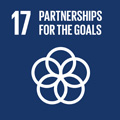- Docente: Alessandra Scagliarini
- Credits: 1
- SSD: VET/05
- Language: Italian
- Teaching Mode: Traditional lectures
- Campus: Forli
- Corso: Single cycle degree programme (LMCU) in Medicine and Surgery (cod. 5905)
-
from May 27, 2025 to May 30, 2025
Learning outcomes
At the end of the course, the student will be familiar with the concepts of unique health and circular health and will be aware of the activities of institutions working in this field at a global level. He/she will acquire basic knowledge of health emergencies in social-ecological systems with particular reference to emerging and re-emerging and neglected zoonoses (Antropozoonosis, Zooanthroponosis, Amphizoonosis).
Course contents
Lecture 1.The connections between humans, animals and the environment require collaboration across sectors to understand and reduce risks and consequences to health and welfare. The One Health approach offers opportunities for synergistic expertise to address complex health threats to people, animals and the environment and highlights the need for specialists in multiple sectors. Global health challenges transcend national, European and international boundaries and require a cross-sectoral approach. For this reason, international organisations have come together to launch the One Health approach to improve understanding of how diseases potentially capable of triggering pandemics emerge and spread. As an example, the FAO-OIE-WHO-UNEP quadripartite collaboration will be illustrated.
Lecture 2 -About 60% of all known human infectious agents (e.g. rabies, brucellosis, leptospirosis) originate in animals. Ebola, highly pathogenic avian influenza, SARS, MERS and COVID-19 are the most recent examples of new or emerging infectious diseases in humans caused by zoonotic pathogens. Risk factors and spillover concepts will be explained through case studies.
Lecture 3 - The spread of emerging diseases is accelerating as a by-product of the growth of global trade and travel. The growth of trade with emerging markets and developing economies has increased the likelihood of reinfection from existing animal reservoirs. Recent research suggests that as wildlife moves along the supply chain, from capture sites to large markets to restaurants, the possibility of spill-over is amplified. Preventing future pandemics requires a multi-sectoral approach to take measures to reduce the risk of spill-over. Practical examples will be used to explain the principles of risk assessment
Lecture 4 - In the Anthropocene, human interaction with nature and animals has changed considerably. This has been brought about by the domestication of animals, the expansion of agriculture into natural ecosystems, urbanisation and the industrialisation of food systems. The species and number of animals in the urban environment and human-animal relations have changed. In the Western world, especially in the urban environment, people tend to be more detached from so-called farm animals and have developed closer bonds with companion animals. At the same time, in many countries of the global South, people and animals, whether domestic or wild, also live in close contact in urban centres (e.g. open-air markets, wild animals kept in sacred or stray temples). The recent pandemic of COVID-19 and monkeypox are the result of the complex interactions in the socio-ecological systems.
Readings/Bibliography
scientific references and multimedia resources will be made available on VIRTUALE
Teaching methods
traditional teaching and discussions through flipped classroom
Assessment methods
final written report on a case study
Teaching tools
power point presentations, videos, case studies
Office hours
See the website of Alessandra Scagliarini
SDGs



This teaching activity contributes to the achievement of the Sustainable Development Goals of the UN 2030 Agenda.
